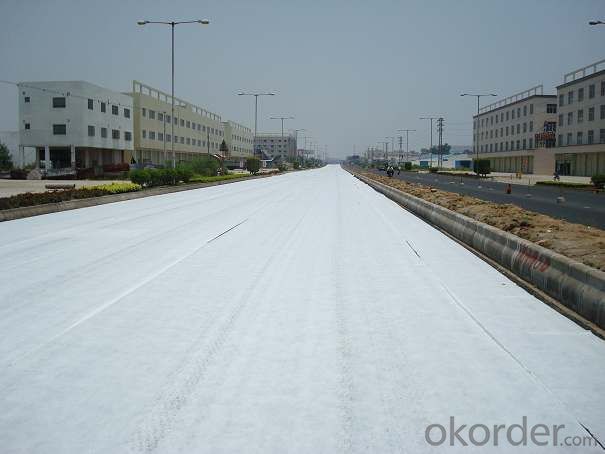- Understanding the Role of Geomembrane Liners in Waste Management
- Innovations in Geomembrane Liners for Water Management
- Geomembrane Liners: A Comprehensive Guide
- The Future of Geomembrane Liners in Civil Engineering
- Geomembrane Liners: Enhancing Landfill Stability
Manager:
WhatsApp:+86 177 0135 2670
Tel:+86 177 0135 2670
Email:marketing@okorder.com
Address:3rd Floor, No.2 Building, No.1 Sanlihe Road
HDPE Geomembranes: The Essential Component for Ponds in Soil Erosion Ponds
Ponds are a common sight in many landscapes, from small backyard gardens to large-scale agricultural operations. They serve a variety of purposes, from aesthetic appeal to functional uses such as irrigation and water storage. However, one of the biggest challenges in creating and maintaining a pond is dealing with soil erosion. This is where hdpe Geomembranes come into play, proving to be an essential component for pond construction and management.

The Role of HDPE Geomembranes in Ponds
HDPE, or high-density polyethylene, is a type of plastic that is highly resistant to chemicals, UV radiation, and temperature changes. When used as a geomembrane in ponds, it provides a durable and waterproof barrier that prevents soil erosion and maintains the structural integrity of the pond.
Why HDPE Stands Out Among Other Materials
While there are various materials available for pond liners, HDPE geomembranes stand out for several reasons:
- Durability: HDPE is incredibly strong and can last for decades without losing its effectiveness.
- Puncture Resistance: Unlike some other materials, HDPE doesn’t tear or puncture easily, reducing the risk of leaks and water loss.
- Chemical Resistance: It won’t react with the soil or water, ensuring the safety of the aquatic environment.
- Low Maintenance: Once installed, HDPE requires minimal upkeep, saving time and resources.
- Environmental Friendliness: Although it’s a synthetic material, HDPE is recyclable and has a lower environmental impact compared to some alternatives.
Installation: A Step-by-Step Guide
Setting up an HDPE geomembrane might seem daunting, but it's quite straightforward. Here’s a simple guide to get you started:
1. Prepare the Site: Clear the area of any debris and ensure the ground is level and free of rocks or sharp objects.
2. Measure and Cut: Measure the dimensions of your pond and cut the HDPE sheet accordingly, leaving some extra for seams and overlaps.
3. Seams and Seam Sealing: Overlap the edges of the geomembrane and use a heat welder to create a strong bond. This is crucial for preventing leaks.
4. Anchoring the Membrane: Secure the edges of the geomembrane using weights, such as sandbags or soil, to keep it in place.
5. Final Inspection: Check for any punctures or imperfections, and repair if necessary before filling the pond with water.
The Impact of HDPE on Soil Erosion
Soil erosion is a silent enemy for pond owners. It can lead to the loss of valuable topsoil and disrupt the pond’s ecosystem. HDPE geomembranes combat this issue by:
- Creating a Barrier: Preventing soil particles from being washed into the pond.
- Stabilizing the Pond’s Edges: Reducing the impact of water on the surrounding soil.
- Facilitating Vegetation: Allowing plants to grow more securely along the pond’s edges, which in turn helps to anchor the soil.
Real-Life Applications and Benefits
HDPE geomembranes aren’t just theoretical solutions; they’ve proven their worth in real-life scenarios. Here are some benefits observed by pond owners:
- Enhanced Aesthetics: A clean and well-maintained pond adds to the visual appeal of any landscape.
- Improved Water Quality: By preventing soil from mixing with the water, HDPE geomembranes help maintain clear and healthy water conditions.
- Cost-Effectiveness: The initial investment in HDPE pays off in the long run by reducing maintenance costs and water loss.
- Ecological Balance: They support a balanced ecosystem by preventing soil erosion and providing a stable environment for aquatic life.
The Future of Pond Management with HDPE
As we look to the future, the use of HDPE geomembranes in pond management is likely to expand. With growing environmental concerns and the need for sustainable solutions, HDPE offers a promising path forward.
- Innovations in Installation: We can expect to see new techniques and tools that make the installation of HDPE geomembranes even easier and more efficient.
- Customization: Tailored solutions for different pond sizes and shapes will become more common, catering to the specific needs of pond owners.
- Integration with Smart Technology: The potential for HDPE geomembranes to be integrated with monitoring systems for real-time pond health assessment is an exciting prospect.
Conclusion
In conclusion, HDPE geomembranes are a game-changer for pond owners dealing with soil erosion. Their durability, puncture resistance, and low maintenance make them an ideal choice for long-term pond management. By understanding the benefits and following proper installation guidelines, you can ensure that your pond remains a beautiful and functional feature for years to come. So, the next time you’re contemplating a pond project, remember the power of HDPE and how it can transform your landscape.
- Previous:HDPE Geomembranes: The Ideal Material for Ponds in Roof Waterproofing Ponds
- Next:HDPE Geomembranes: The Protective Solution for Ponds in Chemical Plant Ponds






